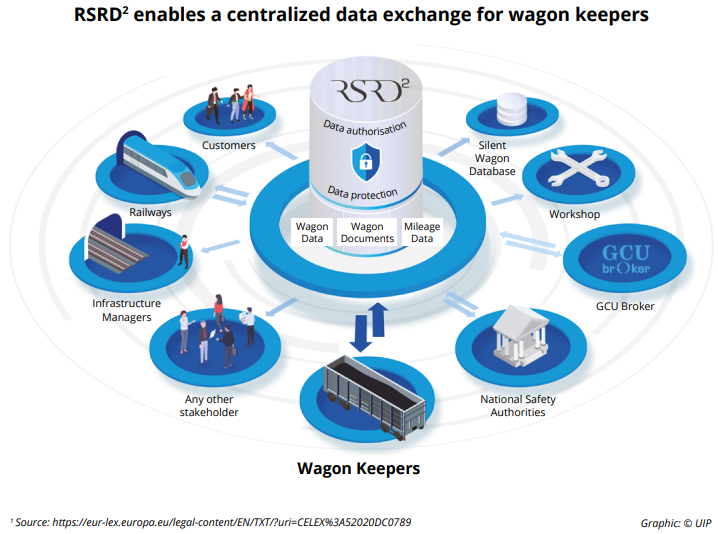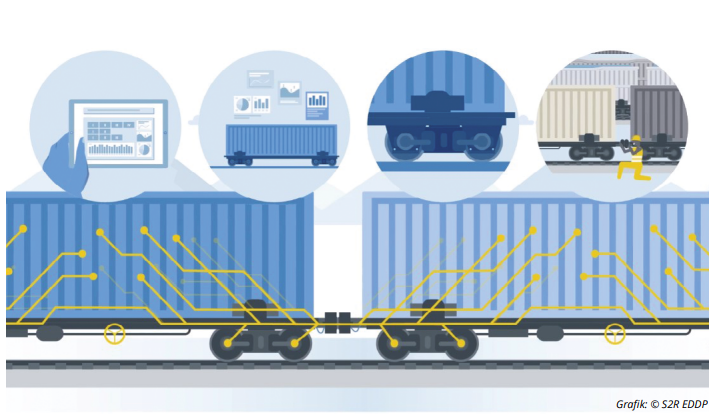Digital disruption in rail freight: against the background of a big bang?
Trains have always been a symbol of industrial development and a national pride for almost all European countries. One would then think that this would have led railways to embrace the 4th industrial revolution and digitalisation. It took decades for the rail stakeholders to discover the benefits and necessity of a digital disruption that affects business models, the company’s current value proposition, and the resulting market position.
By Gilles Peterhans, Secretary General, UIP - International Union of Wagon Keepers
Europe has had for decades big aspirations to reverse the decline of its rail freight industry. The ambition to double rail freight’s modal share by 2050 is part of the strategy towards a green and sustainable mobility published by the end of 2019. But modal shift requires a major transformation of the rail system, and this implies embracing the digital transformation with significant efforts, substantial investments, and smart thinking. Digitalisation encompasses the processes by which digital technologies and information are used to modify organisational models, improve performance, and create new value-producing opportunities. The disruption began in the late 1990s, in the first instance affecting industries based on the provision of information, such as encyclopaedia or business directory publishers.


Slow start: First steps not until early 2006
However, the first step of a digital transformation, the paramount importance of efficient electronic data exchange between railway actors, was only established early in 2006 in the Commission Regulation Nr 62/2006 of 23 December 2005, also known as the Telematic Applications for Freight (TAF) TSI. It took years for the sector stakeholders to deliver a strategic deployment plan (SEDP) on how to implement the TAF TSI concept on a European scale. Various industry developments and legislation changes have since then enhanced the need for solutions that can interlink the contents of existing or planned sector databases and public registers in order to generate higher value information in response to complex operational, safety-related, environmental, or supervisory challenges in rail freight.
The rail freight industry has been the king of providing huge amounts of data with all sorts of Excel files and PDFs but we soon recognized that using digitalisation to improve and streamline operational processes was probably more than exchanging emails. With this in mind and driven by the legal obligation embedded in the TAF TSI, UIP initiated the development of an efficient Data Exchange Software back in 2007 (RSRD²) which is already available in a first release version. While the original impetus to develop RSRD² was the delay of the sector to implement the TAF TSI tools, the joint efforts of private wagon keepers have made RSRD² a front-running solution today.
RSRD² as the first community initiative
The RSRD² initiative was the first step of UIP’s keeper community to solve jointly a common technical challenge at optimum cost/performance ratios. Freight wagon keepers see their initiative for open data exchange as serving the whole market and fully support sharing meaningful tools and putting them to service for other market participants such as Railway Undertakings (RUs), National Safety Authorities, Infrastructure Managers, workshops, shippers/freight forwarders and more generally customers.
The digital disruption in other industries has been unprecedented and characterized by the deployment of new technologies blurring the lines between the physical and digital spheres. It took us 10 years to establish RSRD² as a pragmatic business tool and a sector platform. Digitalisation is an important condition for economies to perform well and is slowly but surely becoming a central and strategic element of competitiveness as well for rail companies. The key lever to pull is still a change of mindset.
ERTMS and DAC, current pan-European initiatives as possible enablers of a big bang
The big bang of the digital disruption has not happened yet in rail but the breadth and depth of changes linked to the introduction of new technologies will transform the entire rail freight systems of production, management, and governance. With the help of funding and governance of instruments like the new Europe’s Rail Joint Undertaking, ERTMS shall become the backbone of digital trains and DAC the enabler for fully digital freight train operation. A real breakthrough in digitalisation will only happen when a growing number of systems will get interlinked not only within a single vehicle, but also with the infrastructure, the operational processes and as such the whole rail ecosystem.


